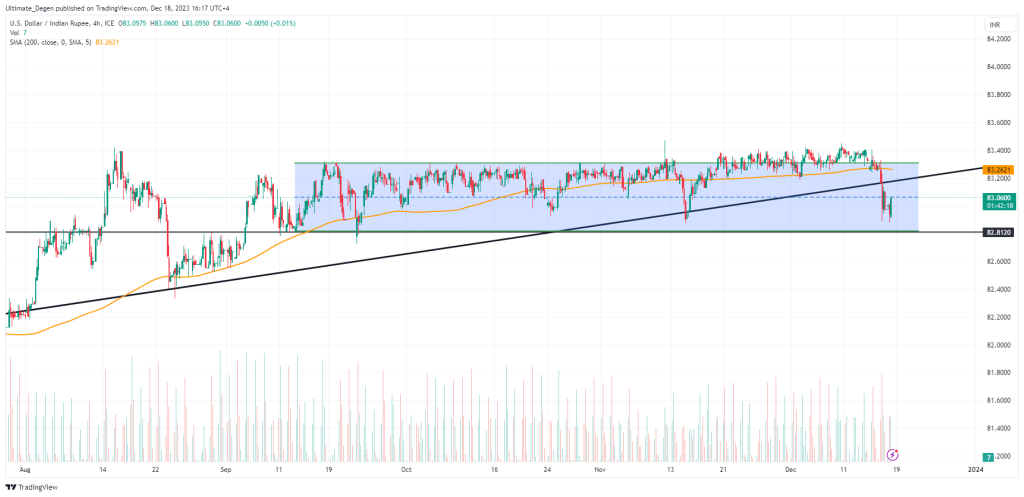- USD/INR Forecast: USDINR hit its lowest level since September on Monday. However, the demand from importers pushed it back above 83.06.
USD/INR exchange rate plummeted to its fresh 3-month lows on Monday. However, bulls were quick to react and the pair rebounded. Consequently, US dollar to Indian rupee rate stood at 83.06 at press time.
The recent strength in Indian rupee can be attributed to the weakening dollar and low oil prices. In addition, the recent FOMC meeting in the US put the rate cuts during the first quarter of 2024 on the cards which caused further weakness in the US dollar.
As a result, the global currencies in general and Indian rupee in particular have posted major gains against the greenback in the last few days. According to reports, foreign were the biggest sellers of dollars on Monday as they pushed rupee to its highest level since 22nd September.
However, the importer rushed to scoop up cheap dollars and pushed USD/INR higher. As a result of last week’s dollar sell-off, the outlook for Indian currency is looking very positive. This is because technical and fundamental factors, both are pointing toward a stronger rupee in the coming weeks.
USD/INR Technical Analysis
After the recent sell-off, USDINR has broken below the uptrend line which shows weakness in the forex pair and strength in Indian rupee. Consequently, the most likely scenario seems to be a retest of the 82.80 support which is also the current range low as shown in the chart below. Currently, the pair is hovering around 83.05, which is the middle of the same trading range.

As mentioned earlier, the cooling down inflation in the US and the dovish Fed has flipped USD/INR forecast bearish. However, the tables may turn in case of a recession next year. So far, most analysts are expecting a soft landing in the US along with rate cuts which may come as early as the first quarte of next year.





